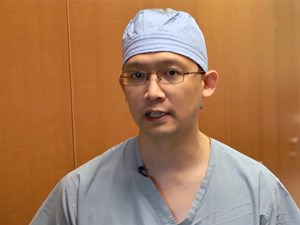
Source: SynCardia Systems, Inc - MNews
How to Implant the SynCardia Total Artificial Heart Detailed in Peer Reviewed Paper and Matching Video
Doctors at Virginia Commonwealth University Medical Center discuss the benefits and use of the SynCardia Total Artificial Heart in a PubMed-indexed case report and video that includes implant surgery of 60-year-old man.
TUCSON, Ariz., July 31, 2014 (GLOBE NEWSWIRE) -- For the first time, cardiac surgeons, medical professionals and the public can watch the implantation of the SynCardia temporary Total Artificial Heart in a peer reviewed case report paper and matching video posted on the Journal of Visualized Experiments website.
Watch the video and read the paper on the SynCardia Total Artificial Heart implantation
The 16-minute video accompanies "Implantation of the SynCardia Total Artificial Heart," a July 18, 2014 paper by cardiac surgeons at Virginia Commonwealth University Medical Center.
The paper and video both describe the case of a 60-year-old male with hypertrophic cardiomyopathy. Both detail the implantation surgery. They also discuss perioperative complications, postoperative care and selection of good candidates for the procedure.
"Patients often present with cardiogenic shock and multi-system organ dysfunction," according to the paper by Drs. Daniel G. Tang, Keyur B. Shah, Michael L. Hess and Vigneshwar B. Kasirajan. "Excision of both ventricles and orthotopic replacement with the [SynCardia Total Artificial Heart] is an effective…therapy for rapid restoration of blood flow and resuscitation."
Heart failure patients who are extremely sick can get a second chance at life with the SynCardia Total Artificial Heart. It is the only approved device that eliminates the source of end-stage biventricular (both sides) heart failure in which the native heart ventricles can no longer pump enough blood for the patient to survive.
"The main advantage of the Total Artificial Heart over left ventricle assist devices [LVADs] is the [SynCardia Total Artificial Heart] allows for high-flow biventricular support," Tang, VCU assistant professor of cardiothoracic surgery, says in the video, "as well as the ability to treat a wide range of complex cardiac pathology that may not be ideally treated with isolated [LVAD] support."
The SynCardia Total Artificial Heart is becoming the standard of care for addressing end-stage biventricular heart failure. Says Tang: "Refinements in the current generation SynCardia [Total Artificial Heart], patient selection, management of pericardial space, as well as perioperative management of the patients, have led to a marked improvement in patient outcomes."
For additional information, please visit: http://www.syncardia.com/
Like SynCardia on Facebook
Follow SynCardia on Twitter – @SynCardia
Connect with SynCardia on LinkedIn
Share and Discover on Google+
About the SynCardia temporary Total Artificial Heart
SynCardia Systems, Inc. in Tucson, Arizona is the privately-held owner and manufacturer of the world's first and only FDA, Health Canada and CE approved Total Artificial Heart.
Originally used as a permanent replacement heart, the SynCardia Total Artificial Heart is currently approved as a bridge to transplant for people suffering from end-stage biventricular heart failure in which both ventricles can no longer pump enough blood for a person to survive.
More than 1,300 implants of the SynCardia Total Artificial Heart accounts for over 400 patient years of life on the device. Since January 2011 more than 400 SynCardia Hearts have been implanted.
SynCardia Systems also manufactures the Freedom® portable driver, which powers the SynCardia Heart while allowing clinically stable patients to leave the hospital to live at home and in their communities. The wearable Freedom driver has been used by 175 patients, accounting for over 100 years of support.
Media Contact:
Don Isaacs
disaacs@syncardia.com
Vice President of Communications
SynCardia Systems, Inc.
Cell: (520) 955-0660
A photo accompanying this release is available at:
http://www.globenewswire.com/newsroom/prs/?pkgid=26811
